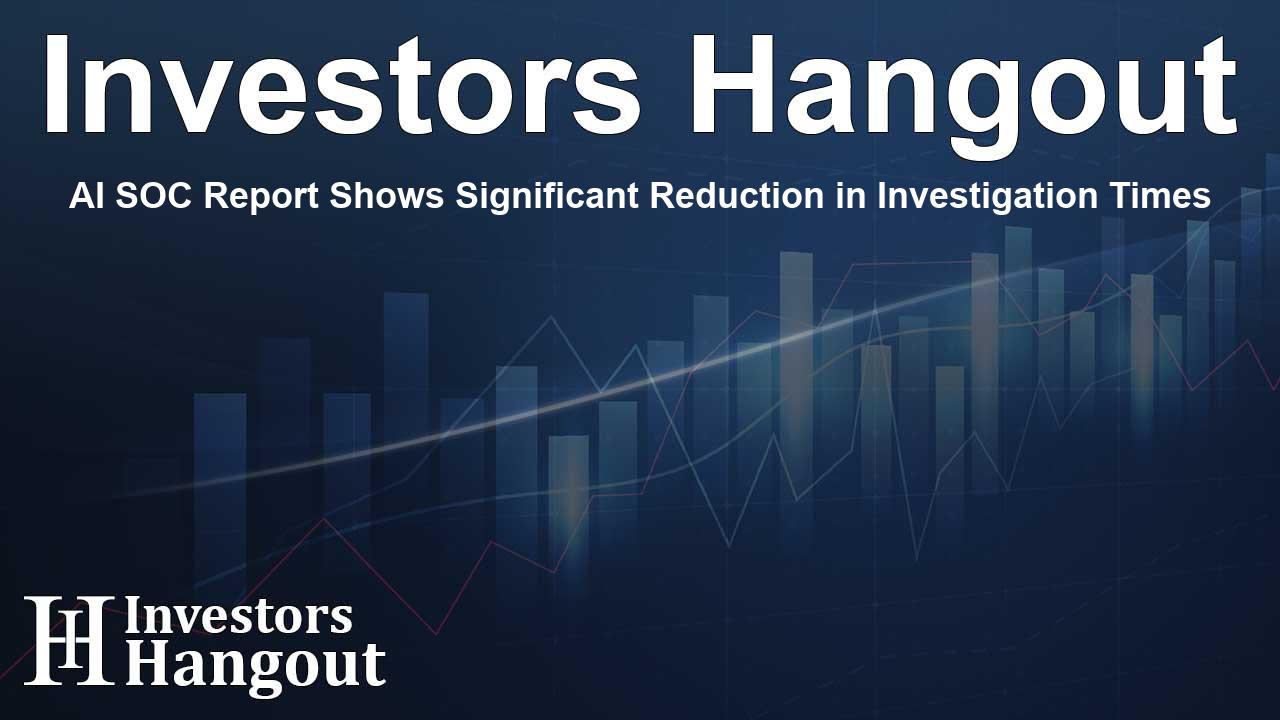AI SOC Report Shows Significant Reduction in Investigation Times

Major Insights into AI in Security Operations Centers
Gurucul recently unveiled groundbreaking findings in its latest AI SOC report, showcasing how Security Operations Centers (SOCs) are undergoing a pivotal transformation due to rising cyber threats and operational challenges. This insightful research sheds light on the adoption of AI technologies within the security landscape, emphasizing not only the necessity of such advancements but also the tangible benefits that organizations are witnessing.
Understanding the Current Cybersecurity Landscape
As businesses strive to protect their digital assets, the threat landscape becomes ever more complex. Organizations are now facing increased pressure due to a surge in identity-based attacks and an overwhelming volume of security alerts. These factors, combined with staffing shortages, are pushing security teams to seek innovative solutions. The report indicates that AI is rapidly evolving from a futuristic concept into a crucial operational tool that enhances security effectiveness.
Key Takeaways from the 2025 AI SOC Report
The findings of the report are indeed compelling:
The Growing Threat of Identity Risk
One of the primary concerns highlighted by security leaders is the increased prominence of identity and human risk. A staggering 78% of respondents point to social engineering and phishing as their principal threats, particularly noting the challenge in achieving visibility into access behaviors.
Rising Alert Volumes and Analyst Fatigue
With nearly 88% of SOCs experiencing an uptick in alert volume over the past year, nearly half of those reported increases of over 25%. This alert overload leads to what many professionals refer to as 'alert fatigue,' a challenge felt by around 76% of respondents.
Staffing Challenges in Security Operations
The findings also reveal a concerning trend in human capital limitations, with 73% of analysts experiencing burnout. This highlights the pressure on teams who still heavily rely on manual processes for detection and response.
Accelerating Adoption of AI Tools
Interestingly, 87% of survey participants report either deploying or testing AI-powered tools within their SOCs. However, only 31% effectively integrate these solutions into their core functions for detection and response.
Real-World ROI from AI Automation
The impact of these AI tools is tangible, as 60% of adopters now report a reduction in investigation time by at least 25%. This efficiency translates to faster responses and less fatigue among security analysts, marking a significant improvement in operational capacity.
Industry Leaders Weigh In
Holger Schulze, founder and CEO of Cybersecurity Insiders, shared his insights, stating, "AI-powered SOCs are no longer just theory; they're cutting investigation times, reducing false positives, and lowering analyst burnout. Leaders are unifying identity and behavioral analytics as a force multiplier, turning fragmented data into decisions in seconds and getting ahead of threats instead of chasing them." This perspective emphasizes the critical role AI plays in reshaping how organizations respond to threats.
Similarly, Saryu Nayyar, CEO of Gurucul, remarked on the report's reflection of real-world scenarios faced within SOCs: "SOCs are overwhelmed by the scale, speed, and sophistication of modern threats, and AI has moved from hype to a proven catalyst for growth. However, adoption must be strategic to ensure that these tools are deeply integrated into detection and investigation processes for optimal results."
The Future of AI in SOCs
The 2025 AI SOC report not only presents a data-driven perspective on the modernization of SOCs but identifies areas where AI adoption thrives and where gaps still exist. As organizations look to improve their security posture, understanding these dynamics becomes crucial.
Frequently Asked Questions
What is the main finding of Gurucul's AI SOC report?
The report reveals that 60% of adopters of AI SOC technologies have cut investigation times by at least 25%, emphasizing the efficiency of AI in cybersecurity.
Why are SOCs looking to AI technologies?
SOCs are transitioning towards AI due to escalating identity-based attacks, increased alert volumes, staffing shortages, and the necessity to improve operational capabilities.
What challenges are security analysts facing?
Analysts are experiencing burnout due to heavy workloads and reliance on manual processes, contributing to alert fatigue and diminishing efficiency in their roles.
How widespread is AI adoption among SOCs?
According to the report, 87% of surveyed SOCs are deploying, piloting, or evaluating AI-powered tools, although only a portion effectively integrates them into core operations.
What are the strategic implications of AI integration?
Successful AI integration into SOC operations can lead to faster investigations, reduced analyst fatigue, and ultimately, an improved security response framework for organizations.
About The Author
Contact Henry Turner privately here. Or send an email with ATTN: Henry Turner as the subject to contact@investorshangout.com.
About Investors Hangout
Investors Hangout is a leading online stock forum for financial discussion and learning, offering a wide range of free tools and resources. It draws in traders of all levels, who exchange market knowledge, investigate trading tactics, and keep an eye on industry developments in real time. Featuring financial articles, stock message boards, quotes, charts, company profiles, and live news updates. Through cooperative learning and a wealth of informational resources, it helps users from novices creating their first portfolios to experts honing their techniques. Join Investors Hangout today: https://investorshangout.com/
The content of this article is based on factual, publicly available information and does not represent legal, financial, or investment advice. Investors Hangout does not offer financial advice, and the author is not a licensed financial advisor. Consult a qualified advisor before making any financial or investment decisions based on this article. This article should not be considered advice to purchase, sell, or hold any securities or other investments. If any of the material provided here is inaccurate, please contact us for corrections.
